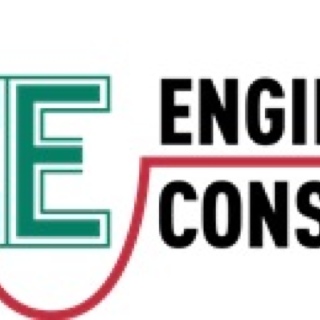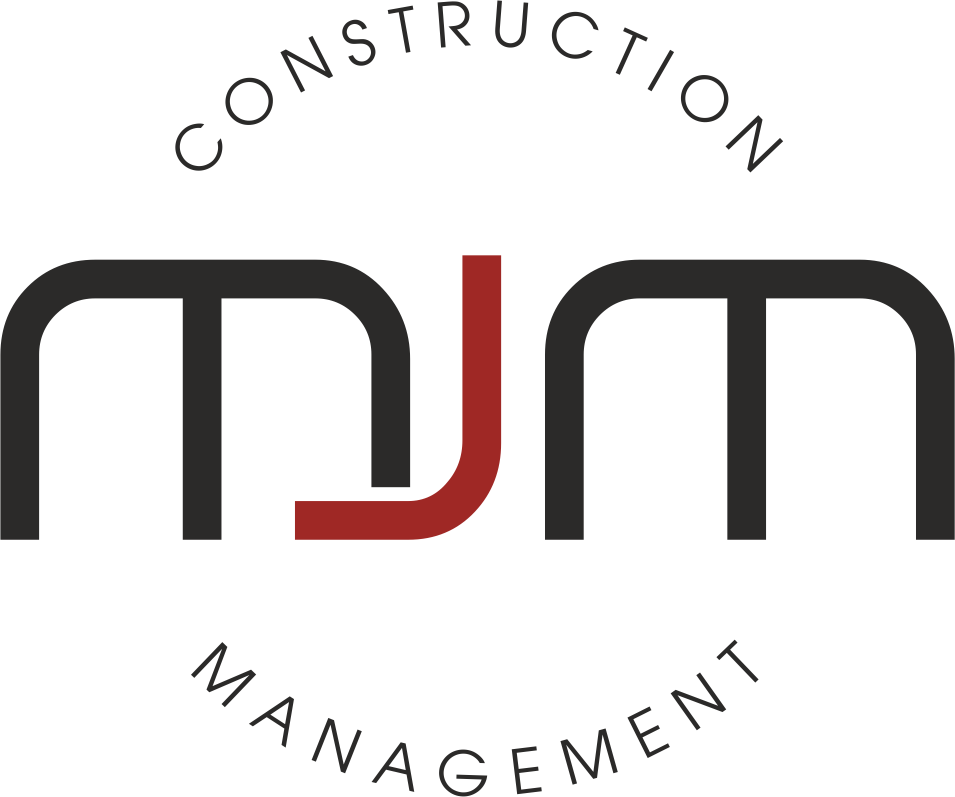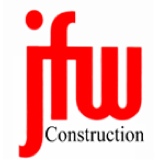Information
-
Audit Title
-
Client / Site
-
Add media
-
Conducted on
-
Audit report prepared by
-
Personnel Interviewed
Commitment & Responsibility
1.01 HSE Management System Development
-
A. The current WHS & Injury Management and Environmental Sustainability Policy Statements are in place and available to workers and interested stakeholders
-
B. Consultation occurs in development of HSE Management System documentation
-
C. All HSE Management System documents are approved (by an appropriate manager; usually site CEO)
-
D. National and site HSE Management System documents are available to workers
-
E. Site HSE documents are consistent with national HSE Management System; where there is a variation, the process has been endorsed by National Manager WHS&E
-
F. Process is in place to verify content accuracy (e.g. references are current) of HSE documents i.e. use of HSE System Document Verification Checklist
1.02 HSE Responsibilities
-
A. Relevant site HSE Management System documents define responsibilities
-
B. Senior management can demonstrate an understanding of organisational HSE duties and their responsibilities
-
C. Personnel are held accountable for health and safety performance in accordance with their defined responsibilities
-
D. Position descriptions include core HSE responsibilities for relevant employees
Planning, Objectives & Targets
2.01 Plans, Objectives & Targets
-
A. WHS & Environmental Action Plans are established
-
B. Actions identified in plans have a priority ranking, assign responsibility and have a planned timeframe for completion
-
C. Objectives, targets and performance indicators are identified and measured
-
D. Plans are reviewed and the close out of actions is monitored
2.02 Measuring HSE Performance
-
A. Both positive and outcome focused performance indicators are established, monitored and reviewed
-
B. Performance statistics produced are consistent with KPI Definition Manual and WHS Performance Reporting Guide
-
C. Regular, timely reports on HSE performance are produced and distributed
-
D. Relevant staff have personal HSE performance indicators allocated as part of their performance appraisals
2.03 National Greenhouse & Energy Reporting
-
A. NGERS reporting occurs within timeframe required under NGERS Act
-
B. Energy consumption data for the facility is recorded as per NGERS specifications and copy of data supplied to National Manager WHS&E
2.04 HSE Validation (Legal Requirements)
-
A. All relevant HSE legislation, standards, codes of practice, and guidelines have been identified and content is monitored i.e. legislative matrix in place
-
B. HSE Management System documents and work instructions reflect the requirements of current legislation, standards, codes of practice and guidelines
-
C. Relevant personnel in the organisation are advised of, and have ready access to, current relevant legislation, standards, codes do practice and guidelines
2.05 Document Control & Record Management
-
A. HSE documentation and records are controlled to ensure that: they are identified to the appropriate service or activity; current versions are available and easily accessible to all personnel; a master list identifies the current revision of documents; and obsolete documents are removed from use
-
B. HSE Management System documents identify required document control information i.e. title, approved by, author, version, document no., date issued/approved
-
C. Processes are in place for the safe storage of HSE documents and records, including soft copies stored on backed up drive and hard copies stored in secure location, protected from damage
-
D. Confidentiality is maintained of HSE related records that contain potential personal information regarding any individual e.g injury management files
Risk Management Strategy
3.01 Contractor Management
-
A. A contractor/approved supplier register is maintained and contains information relevant to the company e.g. Contact details, insurances, performance records
-
B. Induction training is undertaken by contractors prior to commencing work and records are maintained
-
C. Contractor companies have signed the Contractor Agreement Form or similar contract
-
D. Safe Work Method Statements and/or risk assessments are prepared for contractor work activities
-
E. Contractor work practices are reviewed periodically throughout the contract to ensure the adequacy of their HSE practices
3.02 Environmental Aspects & Impacts
-
A. A environmental aspects & impacts register is developed
-
B. Actions contained within the register are assigned and monitored
3.03 Volunteer Safety
-
A. Volunteer induction program is in place and relevant task related training is delivered where applicable
-
B. Volunteer records are maintained: training, personal details, criminal record checks, work restrictions, dates and work performed
-
C. Volunteers are aware of and have access to the site WHS consultation process - provided with information relevant to their WHS
3.04 Visitor Safety
-
A. Assessment conducted to determine need for visitor sign in/identification and information/sign in process in place/relevant site information given to visitor
-
B. Appropriate access controls in place in prevent visitors entering restricted areas
-
C. Workplace inspections and risk assessments cover public areas (including outside building e.g. car park)
3.05 HSE Risk Management
-
A. Hazards are identified via both proactive (e.g. inspections, risk assessments, worker reports) and reactive (e.g. injury/incident reports) methods
-
B. Risks are controlled based on the hierarchy of control
-
C. Risk assessments are undertaken using the defined methodology and/or risk assessment form
-
D. Risk assessments and control measures are reviewed
-
E. Risk assessments are undertaken by competent personnel
-
F. Hazards and control measures are assessed in consultation with workers/HSRs
3.06 Change Management
-
A. HSE specifications, requirements and risk assessment are incorporated into new projects and design considerations
-
B. Consultation occurs regarding workplace change that may impact on health an safety
-
C. Competent personnel verify that designs and modifications meet specified health and safety requirements (where relevant - Building Code and Australian Standard specifications
Communication & Awareness
4.01 Health & Safety Consultation
-
A. Two-way communication channels ( e.g. Team meetings, briefing sessions etc) are open for discussion of WHS initiatives and issues
-
B. Worker health and safety representatives are in place for defined work groups and WHS Committees are established for relevant work sites
-
C. Consultation arrangements and WHS Committee constitutions or terms of reference are documented
-
D. WHS Committee minutes are taken, and distributed in the workplace
-
E. There is a documented issue resolution process and progress toward resolution of health and safety issues is communicated
-
F. All health and safety representatives and WHS Committee members have received required training
-
G. Those who represent employees on health and safety matters are provided with time and resources to effectively undertake this role
-
H. Details of the consultative arrangements, including the names of worker and employer representatives for health and safety matters, are communicated to workers
4.02 HSE Communication & Promotion
-
A. HSE awareness and promotional publications, notices etc are displayed or made available to workers throughout the organisation
-
B. Safety signs, including hazard warning signs are displayed in accordance with legislation and Australian Standards
-
C. Health and safety promotional activities are scheduled for and implemented in relevant workplaces
4.03 HSE Training & Competency
-
A. Standards of competency for roles are determined e.g. Training needs analysis
-
B. Training calendar/schedule is developed to identify training to be completed
-
C. Training delivery plan and materials are developed for all formal HSE training
-
D. Training records are kept to confirm training attendance/participation
-
E. Where specific training/licence requirement is required for high risk activities, training has been undertaken and copy of licence is on record; licences or certificate of competency
-
F. There is an induction program for all personnel including management, which is based on their likely risk exposure
-
G. There is consultation with workers to identify their training needs in relation to performing their work activities safely
-
H. Refresher training (as required) is provided to all personnel to enable them to perform their tasks safely
Emergency Preparedness
5.01 Fire & Emergency Equipment
-
A. Fire detection/suppression systems and equipment, exit signs and fire/smoke doors are inspected, tested and maintained at scheduled intervals in line with relevant Australian Standards
-
B. Competent persons have assessed the suitability, location and accessibility of emergency equipment
-
C. Where a part of the fire detection/suppression systems is shut down or inoperable for any reason there is a process in place to manage related risks
5.02 Emergency Management
-
A. Potential emergency situations have been identified and relevant plans prepared
-
B. All personnel have received training in emergency procedures that are relevant to their responsibilities and area of work
-
C. Emergency instructions and diagrams are displayed and clearly communicated throughout the organisation
-
D. A schedule of emergency training, drills and exercises is developed in order to confirm preparedness
5.03 Hot Work
-
A. Hot Work Permit is used where hot work is undertaken
-
B. Relevant workers are aware of Hot Work Permit and related safety requirements
Process Management & Control
6.01 Asbestos Management
-
A. All asbestos on site has been identified and an asbestos register and asbestos management plan is in place and maintained
-
B. A scheduled asbestos inspection process is in place
-
C. Relevant workers are instructed in asbestos safety and location of asbestos on site
-
D. Any asbestos or asbestos containing material is identified with an appropriate warning sign/label
6.02 Confined Spaces
-
A. All confined spaces have been identified and signposted; Confined Space Identification Form used
-
B. A risk assessment has been undertaken for all confined spaces
-
C. A confined space entry permit system is in place; only competent persons with required equipment are permitted to enter
-
D. Relevant workers have received appropriate training in confined space entry; refresher training is undertaken as necessary
-
E. Any confined space entry equipment is maintained correctly and calibrated/inspected as recommended by manufacturer
6.03 Driver & Vehicle Safety
-
A. HSE factors are taken into consideration when purchasing, hiring or leasing vehicles; minimum 4 star safety rating
-
B. Licence register is maintained for workers that drive as part of their work requirement
-
C. A vehicle inspection and defect reporting process is in place
-
D. All company vehicles have a regular maintenance and service schedule
6.04 Electrical Safety
-
A. Workers that operate electrical equipment as part of their role are provided with electrical awareness training
-
B. RCDs are fitted to all GPO circuits
-
C. Electrical work is only conducted by licensed electricians
-
D. Records are maintained for all electrical maintenance and alterations
-
E. Live work is not conducted, safety observer system is in place and relevant people are CPR qualified
6.05 Safety Inspection & Testing of Electrical Equipment
-
A. An electrical inspection, test and tag assessment has been undertaken
-
B. All relevant electrical equipment has a current test, tag attached; plus records are maintained where relevant
-
C. Safety inspection and testing of electrical equipment is performed by competent individuals
6.06 Energy Management
-
A. Energy use records accurately maintained
-
B. Reasonable practical energy reduction practices and plans are in place
6.07 Hazardous Chemical Management
-
A. Process and training is in place to ensure the safe handling, storage, use and disposal of hazardous chemicals
-
B. There are documented procedures or work instructions for the safe handling and use of hazardous chemicals
-
C. Health and safety information on all hazardous chemicals is readily accessible e.g. SDS
-
D. Hazardous substances and dangerous goods are safely stored
-
E. All substances are identified and clearly labelled to avoid inadvertent or inappropriate use
-
F. A dangerous goods and hazardous substances register is maintained
-
G. All hazardous chemicals used on site are risk assessed
-
H. A hazardous chemical approval process is in place
6.08 Energy Isolation Tags & Lock-Out
-
A. Appropriate controls are used to ensure the safety of persons working on or near plant and equipment that is in the process of being cleaned, serviced, repaired or altered
-
B. Out of Service tags, Danger tags and lock out devices are available to relevant workers, and used
-
C. Relevant workers receive awareness training/information in isolation requirements
6.09 Occupational Violence Prevention
-
A. Risk assessments have been undertaken for areas with potential risk of occupational violence
-
B. At risk areas have physical controls in place where reasonably practical
-
C. Workers are trained in recognising potential violence hazards and managing code black
6.10 Personal Protective Equipment
-
A. Appropriate personal protective equipment is provided and maintained where required
-
B. Provision of PPE is accompanied by suitable information/training, and it is used correcty
-
C. Where PPE is used a risk assessment has been undertaken to determine if there are other superior control measures that are reasonably practical
6.11 Plant & Equipment Safety
-
A. Plant and equipment is maintained and a record is kept which includes relevant details of inspections, maintenance, repair and alteration of plant
-
B. There is a planned schedule for maintenance and inspection of plant
-
C. There is a process for unsafe plant and equipment to be identified and quarantined or withdrawn from service
-
D. Competent personnel verify that plant and equipment is safe before being returned to service after repair or alteration
6.12 Security & Access Control
-
A. Sites determine areas where access controls are required and ensure effective controls are implemented and maintained
-
B. Security assessments are undertaken for at risk areas
6.13 Waste Management
-
A. There are procedures to ensure that materials and substances are disposed of in a manner that minimises risk of potential injury and illness
-
B. Waste separation requirements are identified and are in practice
-
C. Levels of waste disposal are measured and tracked
6.14 Working at Heights
-
A. All work at height activities are risk assessed
-
B. There is a scheduled inspection process in place for all work at heights equipment: static lines, harnesses, ladders etc
-
C. Working at heights permit is in use and or SWMS is in place for relevant tasks
-
D. Relevant workers are trained in safe work at heights and equipment use, including rescue
6.15 Safe Work Method Statements
-
A. Specific instructions and safe work procedures associated with particular products, processes, projects or sites have been developed where appropriate
-
B. SWMS's are document controlled and a register is maintained for SWMS's in place
6.16 Remote & Isolated Work
-
A. Risks are assessed for workers conducting remote or isolated work; SWMS are also developed where identified as necessary
-
B. Workers are provided with relevant equipment for use in remote and isolated areas
-
C. A system is in place to validate the safety of workers in remote and isolated work
Health & Wellbeing
7.01 Work Environment & Facilities
-
A. Worker facilities and amenities are maintained, and housekeeping is effective
-
B. Storage areas are orderly and well maintained, racking is rated and stable
-
C. Access and egress is maintained to allow safe movement around facility; including emergency egress
-
D. A Facilities Plan has been conducted in line with the Code of Practice - Managing the Work Environment and Facilities
7.02 Environmental & Health Monitoring
-
A. Monitoring of the workplace environment is conducted where appropriate and records of the results are maintained
-
B. Inspection, measuring and test equipment related to health and safety monitoring is appropriately identified, calibrated, maintained and stored
-
C. Where health surveillance is required a formal systems is in place to ensure monitoring is conducted at required time periods and records maintained
7.03 Workstation Ergonomics
-
A. Ergonomic factors are considered in risk assessments and workstation design and furniture purchase
-
B. Relevant workers are provided with information regarding ergonomic workstation setup
-
C. Ergonomic assessments undertaken for relevant workstations
7.04 First Aid
-
A. First aid assessment/plan has been undertaken in consultation with workers
-
B. First aid equipment and facilities are in place relevant to the work location and nature of work; including signage; kits adequately stocked and supplies in date
-
C. Processes are in place to prevent exposure to communicable diseases
-
D. Nominated fist-aiders have completed first aid training, where relevant and records are maintained
7.05 Injury Management
-
A. An injury management program has been developed
-
B. Workers compensation poster is displayed where relevant e.g. Looking after you poster
-
C. Each facility has a nominated RTW coordinator (note one person can cover multiple sites); RTW Coordinator has completed relevant training
-
D. Early intervention RTW process is in place; notification, letters, insurer notification, suitable duties identified
7.06 Manual Handling
-
A. Processes and equipment are in place to minimise risks associated with manual handling hazards
-
B. Hazardous manual handling tasks have been risk assessed and controls implemented; use of Manual Task Analysis Form
-
C. Manual handling training is undertaken by all staff in roles that perform manual handling tasks as a core function
Assessment & Improvement
8.01 Corrective & Preventative Actions
-
A. Corrective actions are identified, prioritised and responsibility assigned for implementation
-
B. Site management take timely and appropriate actions on any HSE deficiencies found by an audit
-
C. Progress is monitored to ensure corrective actions are implemented
8.02 Hazard & Incident Reporting
-
A. Workers are enabled and encouraged to report all hazards, incidents and injuries; information is available to workers e.g. included in induction
-
B. Riskman (or equivalent) incident records correctly used and monitored by management
8.03 HSE Audits
-
A. HSE Management System audits are performed by internal and external personnel; and performed objectively by competent personnel
-
B. Reports of audits and reviews of the HSE Management System are produced and distributed within the organisation
8.04 HSE System Reviews
-
A. Performance statistical reviews are conducted with input from senior management and worker representatives
-
B. Senior management oversee a comprehensive documented review of the HSE Management System at defined intervals to ensure its continuing suitability and effectiveness in satisfying the organisation's HSE commitments, objectives and targets.
-
C. Recommendations arising from HSE Management Systems reviews generate actions to improve performance
8.05 Incident Investigation
-
A. All work related injury/illness that result in medical treatment and/or time off work are investigated to identify contributing factors; and control measures are assigned to eliminate or control the risk
-
B. Relevant incidents are investigated by the immediate supervisor and worker representative, as soon as practical after occurring
-
C. Relevant managers, supervisors and health & safety representatives receive training in incident investigation
8.06 Statutory Reporting
-
A. Significant incidents are reported to the Regulatory Authorities as required by legislation
-
B. Relevant personnel understand the statutory reporting requirements
-
C. Statutory reportable incidents are investigated, reported to senior management and records maintained
8.07 Workplace Inspections
-
A. Regular planned inspections are carried out and recorded; inspection requirements for each work area are documented (e.g. checklist)
-
B. Worker representatives participate in or are consulted in inspection findings
-
C. Inspections seek input and involvement from the personnel who are required to undertake the tasks being inspected
-
Actions
Action 1.
-
Auditors Signature
-
Enter Audit Date













